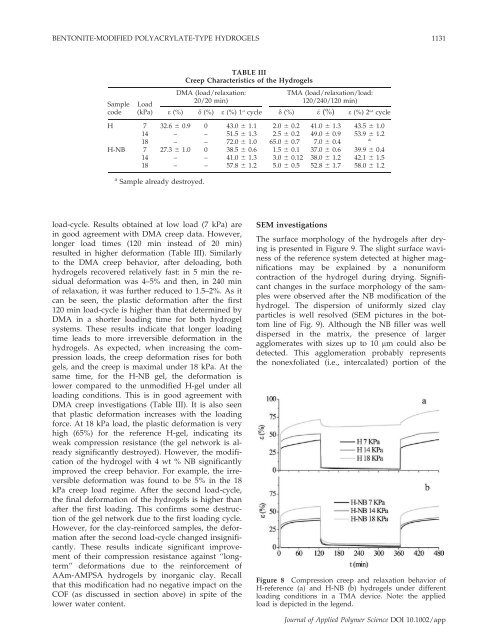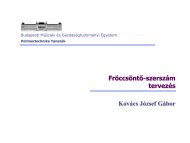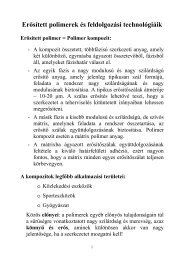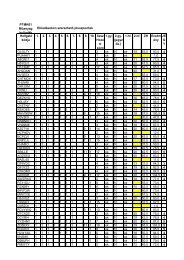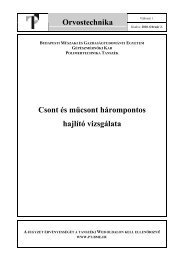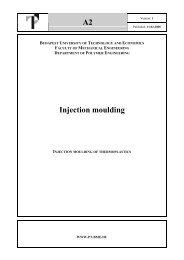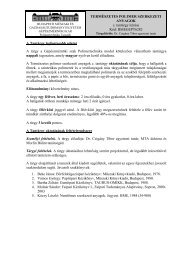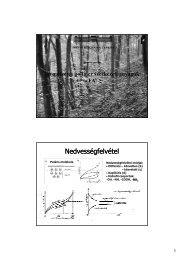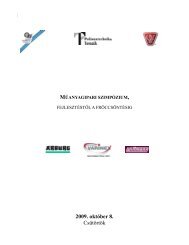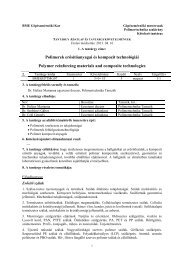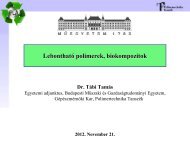Swelling, compression and tribological behaviors of ...
Swelling, compression and tribological behaviors of ...
Swelling, compression and tribological behaviors of ...
You also want an ePaper? Increase the reach of your titles
YUMPU automatically turns print PDFs into web optimized ePapers that Google loves.
BENTONITE-MODIFIED POLYACRYLATE-TYPE HYDROGELS 1131SamplecodeLoad(kPa)TABLE IIICreep Characteristics <strong>of</strong> the HydrogelsDMA (load/relaxation:20/20 min)TMA (load/relaxation/load:120/240/120 min)e (%) d (%) e (%) 1 st cycle d (%) e (%) e (%) 2 nd cycleH 7 32.6 6 0.9 0 43.0 6 1.1 2.0 6 0.2 41.0 6 1.3 43.5 6 1.014 – – 51.5 6 1.3 2.5 6 0.2 49.0 6 0.9 53.9 6 1.218 – – 72.0 6 1.0 65.0 6 0.7 7.0 6 0.4aH-NB 7 27.3 6 1.0 0 38.5 6 0.6 1.5 6 0.1 37.0 6 0.6 39.9 6 0.414 – – 41.0 6 1.3 3.0 6 0.12 38.0 6 1.2 42.1 6 1.518 – – 57.8 6 1.2 5.0 6 0.5 52.8 6 1.7 58.0 6 1.2a Sample already destroyed.load-cycle. Results obtained at low load (7 kPa) arein good agreement with DMA creep data. However,longer load times (120 min instead <strong>of</strong> 20 min)resulted in higher deformation (Table III). Similarlyto the DMA creep behavior, after deloading, bothhydrogels recovered relatively fast: in 5 min the residualdeformation was 4–5% <strong>and</strong> then, in 240 min<strong>of</strong> relaxation, it was further reduced to 1.5–2%. As itcan be seen, the plastic deformation after the first120 min load-cycle is higher than that determined byDMA in a shorter loading time for both hydrogelsystems. These results indicate that longer loadingtime leads to more irreversible deformation in thehydrogels. As expected, when increasing the <strong>compression</strong>loads, the creep deformation rises for bothgels, <strong>and</strong> the creep is maximal under 18 kPa. At thesame time, for the H-NB gel, the deformation islower compared to the unmodified H-gel under allloading conditions. This is in good agreement withDMA creep investigations (Table III). It is also seenthat plastic deformation increases with the loadingforce. At 18 kPa load, the plastic deformation is veryhigh (65%) for the reference H-gel, indicating itsweak <strong>compression</strong> resistance (the gel network is alreadysignificantly destroyed). However, the modification<strong>of</strong> the hydrogel with 4 wt % NB significantlyimproved the creep behavior. For example, the irreversibledeformation was found to be 5% in the 18kPa creep load regime. After the second load-cycle,the final deformation <strong>of</strong> the hydrogels is higher thanafter the first loading. This confirms some destruction<strong>of</strong> the gel network due to the first loading cycle.However, for the clay-reinforced samples, the deformationafter the second load-cycle changed insignificantly.These results indicate significant improvement<strong>of</strong> their <strong>compression</strong> resistance against ‘‘longterm’’deformations due to the reinforcement <strong>of</strong>AAm-AMPSA hydrogels by inorganic clay. Recallthat this modification had no negative impact on theCOF (as discussed in section above) in spite <strong>of</strong> thelower water content.SEM investigationsThe surface morphology <strong>of</strong> the hydrogels after dryingis presented in Figure 9. The slight surface waviness<strong>of</strong> the reference system detected at higher magnificationsmay be explained by a nonuniformcontraction <strong>of</strong> the hydrogel during drying. Significantchanges in the surface morphology <strong>of</strong> the sampleswere observed after the NB modification <strong>of</strong> thehydrogel. The dispersion <strong>of</strong> uniformly sized clayparticles is well resolved (SEM pictures in the bottomline <strong>of</strong> Fig. 9). Although the NB filler was welldispersed in the matrix, the presence <strong>of</strong> largeragglomerates with sizes up to 10 lm could also bedetected. This agglomeration probably representsthe nonexfoliated (i.e., intercalated) portion <strong>of</strong> theFigure 8 Compression creep <strong>and</strong> relaxation behavior <strong>of</strong>H-reference (a) <strong>and</strong> H-NB (b) hydrogels under differentloading conditions in a TMA device. Note: the appliedload is depicted in the legend.Journal <strong>of</strong> Applied Polymer Science DOI 10.1002/app


